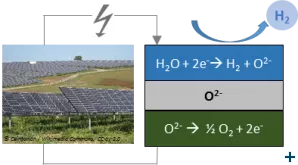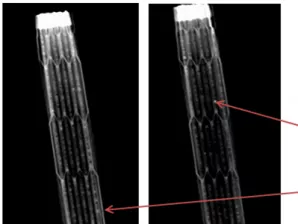Haldor Topsøe is specialized in the development and manufacture of catalysts and the design of process plants for the chemical and petrochemical industries. The production of hydrogen is important as it is a clean fuel and easy to store.
In this view, Haldor Topsøe is developing solid oxide electrolysis cells (SOECs) for hydrogen production. SOECs are a rather competitive solution for small scale hydrogen production. The stacks available in the market may suffer from a performance loss when used over prolonged periods of time. This is due to the physical stress that may weaken the connection between individual layers of a stack.
After consultation, the SINE2020 Industry Coordinators advised the team from Haldor Topsøe to use neutron imaging at the Maier-Leibnitz Zentrum (MLZ) in Germany. Neutron imaging is the most appropriate technique for this case, as it is able to penetrate centimetres of metal without damaging it, and it can “see” hydrogenated materials.
Haldor Topsøe performed neutron radiography and tomography investigations at MLZ for free, through the SINE2020 Industry Activities. The researchers were able to identify hitherto unknown features within the stack.
Christoffer Tyrsted, who is Research Scientist at Haldor Topsøe, stated: “All the way through we received good and competent feedback from the parties. […] The experiments revealed other interesting features we had not considered before obtaining the data.”
Dr. Michael Schulz, scientist at the radiography station ANTARES at MLZ says: „The test radiographies were also positive for us, as there might be follow-up-measurements.” There are more companies interested in the free test measurements in the frame of SINE 2020, asking for the neutron radiography possibilities, says Schulz.
More information:

